Dear All,
If I may reiterate. Here is what Noelle Fuller concluded in her 2018 study “Variation in Growth and Development, and Essential Oil Yield between Two Ocimum Species (O. tenuiflorum and O. gratissimum) Grown in Georgia” [63]: «Of the nine USDA accessions, seven (PI 652059, PI 652056, PI 414205, PI 414201, PI 414202, PI 414203, and PI 414204) were very similar to the commercial cultivar Kapoor. They displayed similar characteristics in phenology, had the same sprawling type growth habit, and exhibited correlative trends of higher yields and lower essential oil percent. » The commercial cultivar Kapoor, sold by Richo Cech, was indeed an ecotype of Ocimum bisabolenum – as all 7 GRIN accessions.
Readers are invited to check the photographs of the pressed plants, of these 8 ecotypes, at this Link provided by Noelle, as well as the video presenting her study in which, right at the beginning, one can clearly distinguish the various rows of Ocimum bisabolenum. Link
In fact, in her study “Yield and essential oils of holy basil (Ocimum tenuiflorum L., O. gratissimum L.): varietal comparison and analytical methods,” published in 2017, Noelle Fuller presents a detailed analysis of the essential oils of “Kapoor” and references PI 652059, PI 652056, PI 414205, PI 414201, PI 414202, PI 414203, and PI 414204 on page 79. The overall level of β-bisabolene and (E)-α-bisabolene varies between 30% and 36% for all these ecotypes. Thus, according to Noelle’s analysis, the major components are: Bisabolene, Eugenol, Methyl-chavicol, and Eucalyptol. The minor components are: β-pinene, β-ocimene, (E)-α-bergamotene, α-humulene, and germacrene D.
Moreover, the analyses presented by Noelle Fuller correspond perfectly to the analyses published by Aynalem Gebre, in 2023, about 49 ecotypes of Basil – of which 44 are misidentified as Ocimum basilicum when they are clearly ecotypes of Ocimum bisabolenum. [5] According to her results, the major components are: Bisabolene, Eugenol, Estragole, and Eucalyptol. The minor components are: β-pinene, β-ocimene, β-caryophyllene, and α-humulene. It is noteworthy that the presence of Methyl cinnamate varies from 1% to 13% – but has a ratio of less than 2% in about thirty ecotypes. According to this Ethiopian researcher: «β-bisabolene was the dominant compound in almost all analyzed accessions, except in five accessions (OB033, OB036, OB013, OB048, and OB047).» It should be noted that β-bisabolene was present in 44 of the 49 ecotypes analyzed and the other 5 had a Linalool chemotype – a minor terpene in Ocimum bisabolenum… which does not appear in Noelle Fuller.
Dear Richo,
Caveat. This sequence of dialogue, concerning the Besobila, will be, soon, posted on my English Substack as I am suffering, acutely, from a severe overdose of public cognitive dissonance, and pathetic disrespect, concerning this lovely species - Ocimum bisabolenum - and my opus about it. By the way, I do not know what you really mean by “kindly”. I profoundly dislike so-called non-violent communication as being an avatar of the despicable “woke” non-culture.
I am posting this brief historical feed-back for the sake of clarity - as it is impossible to fathom the real essence of a process, or phenomenon, a story, a myth, or a glorious feat, etc, when you do not know nothing about its origins.
Also, for the sake of my own “sacred rage” as I am revolted at the amplitude of the lies, the pretenses, the obfuscations, the contempt, the hypocrisies, etc, prevailing, about the so-called “Temperate Tulsi”, in the seed market - but, as well, in the “scientific” sphere as 99 studies so far, since 1990, should be retracted or, at least, corrected - and prevailing about my personal work with Ocimum species including my own discovery of the species status and Ethiopian origin of the “Temperate Tulsi”, the Besobila, Ocimum bisabolenum. One day, I may publish some of my correspondence with PhD botanists, of northern India, or a PhD geneticist from Ethiopia… the height of absurdity.
But this Besobila correspondence is not much in relation with the hundreds of e-mails I sent to people who named themselves “scientists” - and who never answered back.
For example, I wrote to 3 authors - Sarah Chamberlain, Joshua J. Kellogg and R. Teal Jordan - of the recent 2025 study, “Application of predictive modeling tools for the identification of Ocimum spp. herbal products”. Link. Nobody answered me back, so far. I was explaining to them that most of the so-called Tulsi sold in western countries is the Ethiopian Besobila - and not Ocimum tenuiflorum - and that, when they find Bisabolene as a major chemotype, they are dealing with the “Temperate Tulsi”. And I was inviting them, moreover, to read the study “'Product authenticity versus globalization - The Tulsi case”. Link. These researchers, also, found huge discrepancies, in UK, about Tulsi from India (Ocimum tenuiflorum) products, but grown in UK, because it was strictly not Ocimum tenuiflorum as I explained to Peter Nick, co-author and director of the Karlsruhe Botanical Institute in Germany. Ocimum tenuiflorum is tropical, or sub-tropical, and can not be grown easily for mass production in Europe (especially UK) or north-America. The farmers or UK, and north-America, are growing only one Tulsi, the Besobila, Ocimum bisabolenum, for the medicinal plant trade - because it is “Temperate”! N’est-ce pas? In fact, the so-called mix of Tulsi, sold everywhere by Organic India, is composed of 2 species: Ocimum tenuiflorum (Rama and Krishna) and Ocimum gratissimum (Vana) - both being warmth-loving species not adapted to mass-production in western countries.
This brief historical feed-back is also for the sake of highlighting your own responsibility, Richo, in the past botanical chaos, surrounding the Besobila, in which we have all been involved, at one point, for sure: 12 years ago, I was, then, wrong to follow you! I should have known better… and practice arrogation.
But, more importantly, your own present responsibility in the present botanical chaos surrounding the Besobila. Now, you are wrong not to follow me!
Of course, it is your precious right to disagree but, by the way, with which of the following 26 points do you really disagree, with me, concerning the “Temperate Tulsi”?
By the way, you wrote in your last e-mail: « In my world, much of what has transpired in the mean time has been an effort to find out the true identity of a clearly mislabeled product». No kidding! And since September 6th 2022 - when you acknowledged reception of the publication of my first monograph - you had no “mean time” to plunge, “corps et âme”, in my monograph titled “Ethiopia is the source of the temperate Tulsi with its spicy scent of vanilla and myrrh… and red pollen – Ocimum bisabolenum”! With your high reverence for the “Temperate Tulsi”, one may think that, at least, you would be enticed by such a perfumed title!
Then you wrote: « The best way to sort it out, maybe the only way is through AHP Monographs or for a PhD scientist in genetics and plants to publish a paper in a reputable journal». Had you read my second English monograph, you would have realized that I presented, herein, a huge section titled “According to the paradigm of the genetic mythos… the Ethiopian Besobila is a true species: Ocimum bisabolenum”. Link. I am presenting, and commenting - if I may - 7 studies published in “reputable journals”… as early as 2003. Link.
By the way, the 16 monographs I wrote about Ocimum species - in French, English and Spanish - are they not what you call “AHP Monographs”? Link. This is plainly hilarious.
Now, lets us cut to the chase… as I am a stalker! Were I not, I would not have discovered the secrets of the Besobila. Were I not, I would not have launched, with Sofy my Shakta, a huge movement for the Freedom of Seeds, all over France and Europe, as early as 1992 - including 10 years in front of the Tribunals of Injustice - of which the highest European Court of Justice in Luxembourg - meaning, all the Tribunals corrupted by Monsanto and the Seed Mafia.
Since 1992 with “Jardin Botanique de la Mhotte”, 1994 with “Terre de Semences” and 1999 with “Association Kokopelli”, I have been the warrior leading a movement for the protection of food biodiversity, and open pollinated seeds, and for the social Freedom to use them. Yes, I did explode the monopolistic dam of the Seed Mafia and Europe - at the pleasure of the Mother. Thank you for your attention!
First of all. Speaking of “Respect”.
Do not you think it would me a mark of respect for the “Temperate Tulsi” - that you love so much - to lend some of your precious time, even in diagonal, to the first monograph I wrote - during the summer 2022, about the Besobila, Ocimum bisabolenum? Without even mentioning some kind of respect for my own “stalking” feat of solving a botanical chaos lasting since the year (of my birth) 1953 - with the introduction of different ecotypes of “Temperate Tulsi” in the Tobacco Division in Ames, Iowa! You told me that you would read it… and you never did.
Neither did you read my second one “What the Fake is Going on in the Ocimum world? A Manifesto in Homage to the Ethiopian Besobila, Ocimum bisabolenum” of October 2024. Are you too afraid to know the truth about your “Temperate Tulsi”? Maybe you should increase the dose!
Moreover, do not you think it would be a mark of respect for Noelle Fuller to report truthfully the results of her 2015/2016 studies, about your “Temperate Tulsi”,“Kapoor”, instead of pretending that it has an Eugenol chemotype.
And then on September 22 nd 2022, you changed your mind and you wrote to me that : «We ran chromatographic analysis on temperate tulsi last year and bisabolene was not identified. We found geraniol, citral, nerol, trans-a-bergamotene, nerol acetate, isocaryophyllene, etc. Can't share the chromatogram because it is still unpublished. » Is it published by now? Would you, please, send the link of this analysis? I am very impatient to read it as it would be the first study not to discover Bisabolene in the Besobila! And to pretend that the Besobila would be a “Lemon” type Basil! Pure invention.
You may consult my last, and very long, public Report “Basilics 2025” - in French. Therein, I present pictures of 3 the GRIN/USDA ecotypes of Ocimum bisabolenum specified, in their nomenclature, as Ocimum tenuiflorum. PI 414205, Pi 652056 and PI 652059. These pictures corroborate the beautiful pressed plants presented by Noelle Fuller as well as the results of her studies - namely than Kapoor, PI 414201, PI 414202, PI 414203, PI 414204, PI 414205, PI 652056 and PI 652059 are ecotypes of the same species, Ocimum bisabolenum. LINK.
Anyways, 10 years, later - since I started the whistleblowing - the same seed companies continue to pretend that the “Temperate Tulsi” would be “Kapoor” (Ocimum kilimandscharicum) or Ocimum tenuiflorum or Ocimum africanum… Indeed, during this span of time, I got a few sparse answers… but not willing to question your sacred botanical authority. That is hopeless but people, in this end of Kali Yuga, are severely suffering from a loss of memory and an ever shortening span of attention.
And speaking, again, about Respect. Why my comments, mentioning the publication of my English monographs, never appeared on the page of your blog dedicated to the Tulsi. By whom am I shadow-banned and censured? By the Archontic matrix or by one of its handlers? Link.
And “ à propos” . Contrarily to the erroneous comment by Chris, in March 2025: the “Temperate Tulsi”, Ocimum bisabolenum, is extremely anti-oxidant. In truth, I would deem it the most anti-oxidant species of all the main Ocimum species used on the planet. In Ethiopia, the Ethnic Peoples do not use Ocimum basilicum, Ocimum gratissimum or Ocimum lamiifolium to keep their clarified butter, “Niter kibbeh”, for 15 years. They use their Besobila, Ocimum bisabolenum - with a bunch of other species which are, by the way, renowned for their high Bisabolene content!!! Black pepper (Piper nigrum) [142], Turmeric (Curcuma sps.) [144], Cardamom (Elettaria cardamomum) [5], Black Cumin (Nigella sativa) [137], Cinnamon (Cinnamomum sps.) [141], Ginger (Zingiber officinale)…
Now, for the sake of Memory, here is a short historical sequence.
You wrote in your last e-mail: «I first became aware of the misnaming when I started growing true holy basil (tulsi=Ocimum tenuiflorum) cultivars and realized they were not the same plant.»
So, why, for so long, did you not speak up?
Up to 2010, with “Horizon Herbs”, you sold the “Temperate Tulsi” under the denomination “Rama” and Ocimum sanctum. [See the attached screen pictures].
Then, still with “Horizon Herbs”, you shifted to the denomination “Kapoor” and, still, Ocimum sanctum.
On November 26th of 2016, I wrote to you that: « Kapura Tulsi is definitely the Camphor Basil, Ocimum kilimandsharicum. There is no way that we are going to reinvent the traditional names in Southern India where this Kapura, Kapoor, is very common. Mostly for ritual and medicinal uses. I checked the literature, for the past 3 days, and I have a bunch of studies (some of them dating from 1992) which are very clear on that denomination…. Another botanical precision: you present your “Mtule” as Ocimum suave and then, in the same paragraph, as Ocimum kilimandsharicum. It can not be both. At best, Ocimum suave is considered as Ocimum gratissimum or a sub-species of the same. »
So, then, with your new brand, “Strictly Medicinal Seeds”, you shifted to “Tulsi, Temperate - Holy Basil” with the specie name Ocimum africanum - which is, by the way, the denomination adopted by Alan Paton in the Kew Botanical Garden… whereas the GRIN/USDA label 7 of his ecotypes of Ocimum bisabolenum as Ocimum sanctum. No comments! Moreover, Ocimum africanum does not exist: nowadays, we are speaking of Ocimum americanum sp. pilosum.
That is when I stopped to follow your lead - and to mislead the Association Kokopelli’s customers - concerning the botanical species denominations of Basils as I realized that, for two dozens of years, you had no clue whatsoever.
In December 2016, I alerted everybody in the organic seed business (Peace Seedlings, Johnny’s, Alan Adesse, Adaptive Seeds, Wild Garden Seeds, etc, etc) that, in no way, could we go on labelling the “Temperate Tulsi” as “Kapoor” (Ocimum kilimandscharicum) or Ocimum tenuiflorum as I intuited it was an African species.
I was right… but at that time, we had only Ocimum americanum (var. americanum and var. pilosum) as a major African species.
I had to wait for 6 more years to discover, in 2022, the species status and the Ethiopian origin of the “Temperate Tulsi” - the Besobila growing on the high plateaux of Ethiopia.
And since 2022, dozens and dozens of seed companies, in North-America, and in Europe, which I have informed duly, just keep up pretending. “Yes, and how many times can a man turn his head and pretend that he just doesn't see?”.
Only, my very dear friend, now deceased, Mushroom - aka Alan Michaël Kapuler - trusted me on that issue. But he was a real one, an authentic genius breeder… a nutritional botanical stalker.
As I wrote in my Homage, “Los Cantos de Xochi. Hommage, en peintures, à mon grand ami Mushroom, alias Alan Michaël Kapuler - l’une de mes “Etoiles Juives”, in December 2023: «Mushroom was the Molecular Mystic and the brilliant Flute-playing Troubadour of domesticated plant matter ». Link.
Bom Shakti!
Xochi. aka Dominique Guillet.
Hello everyone on this list!
I encourage everyone to speak kindly and respectully. Everyone on this list has good motivations. As for concern about species confusion: Abundant Life introduced the seed for the Ocimum sp. under discussion into USA commerce in the early 1970's and called it "Holy Basil (Ocimum sanctum), so I personally do not take responsibility for the misnaming. This was such a great plant, and such a marketable name, that to my knowledge nobody took issue with it for decades. I first became aware of the misnaming when I started growing true holy basil (tulsi=Ocimum tenuiflorum) cultivars and realized they were not the same plant. In my world, much of what has transpired in the mean time has been an effort to find out the true identity of a clearly mislabeled product. There has been a huge learning curve in the seed industry vis a vis Ocimum, especially Ocimum tenuiflorum cultivars, which took years to work out and are satisfactorily represented in my current online catalog (Strictly Medicinal Seeds). The Ocimum sp. under discussion has been misidentified by many seed companies and herbal sellers, also misidentified by GRIN and and at least 2 scientific papers I've read. If the herb industry runs away with what sells, scientists at least should back up their claims with due diligence. The best way to sort it out, maybe the only way is through AHP Monographs or for a PhD scientist in genetics and plants to publish a paper in a reputable journal.
Richard A (Richo) Cech, owner Strictly Medicinal Seeds
Xochi, thank you for including me in this email. This is Noelle Joy (previously Noelle Fuller). What you present is very interesting, and I am curious to hear of the results of the genetic and essential oil analysis.
For anyone receiving this, I wanted to follow up and provide a bit more detail about my research. As Xochi said, I evaluated yield and essential oils of 14 cultivars/accessions of tulsi/holy basil in 2015/2016. You can see vouchers of the pressed plants in this folder: https://drive.google.com/drive/folders/0B0Lpqifuu4-Yc3FMOFdIcHZCLTg?resourcekey=0-GHizj306cUF-nwQgPdRnAA&usp=drive_link (there are two that got mixed up on the paper label of the voucher PI 414203 and PI 652057, but the title of the image in the folder has the correct #).
There are 2 papers that got published from that work where I report all the holy basil as Ocimum tenuiflorum (except Vana which is clearly distinguished as Ocimum gratissimum).
I have attached one of them that contains a detailed breakdown of the essential oil profile of all the genetics studied (Joy et al. 2020). Since it was published 4 years after completion of the study, by that point there was open debate about the species designation of the 'Kapoor/Temperate' type. But even though I had my doubts, I decided to publish it as Ocimum tenuiflorum, as that was the designation from Strictly Medicinal Seed and the USDA/GRIN database at the time seeds were obtained (2015).
As more evidence becomes available about the correct species designation, I want to take steps to correct this.
Something else. I took a chemistry statistics class and performed multivariate analysis of my holy basil essential oil data. I wrote up my results in a term paper for the class. It is a rough draft written to complete the requirements of the class, but I wanted to share it for anyone interested (see attached). I have also attached screenshots of the 2 most important pieces of that paper. The first is a figure of a principal component analysis that clearly breaks down the genetics studied into 4 distinct clusters. The second is a table showing the chemical breakdown of the 4 clusters (which I have designated as 4 chemotypes).
The table showing the 4 chemotypes, with the 'Kapoor/Temperate' as chemotype #1, clearly supports what Xochi is saying. That the 'Kapoor/Temperate' chemotype is characterized by Bisabolene, Eugenol, estragole (aka methyl chavicol) and Eucalyptol.
Please include me on future conversations regarding this matter, and I am very interested in receiving updates about the tulsi study in Germany.
Thank you,
Noelle
Dear Richo,
Do you remember that Noelle Fuller did the analysis of the temperate Tulsi you were calling "Kapoor" until I told you that Kapoor was strictly Ocimum kilimandscharicum in India? In 2015/2016.
The PDF is here: https://getd.libs.uga.edu/pdfs/fuller_noelle_j_201705_ms.pdf
Your "Kapoor" - as well as 7 ecotypes of GRIN/USDA, named Ocimum tenuiflorum - had a chemotype: Bisabolene, Eugenol, Methyl-chavicol and Eucalyptol as major components.
Why? Because they are the Ethiopian Tulsi, Ocimum bisabolenum - as I proved it. Besobila. Besobela.
So now, you sell the "temperate Tulsi" as being Ocimum africanum and you wrote you have the proof from a genetic analysis = pure invention. Where is your proof?
So many studies already proved that the temperate Tulsi (named "Spice" and "Blue Spice", also) is genetically so different that it constitues its own clade.
Moreover, orange pollen does not exist in Ocimum americanum var. americanum or Ocimum americanum var. pilosum.
So now, you sell the "temperate Tulsi" as being of a chemotype Linalool, Citral, Geraniol, Nerol... = pure invention. These are the components of Lemon Basil.
How do you dare to lie in such a manner? The major components of the Temperate Tulsi are: Bisabolene, Eugenol, Methyl-chavicol and Eucalyptol.
For your information, the Botanical Institute of Karlsruhe, in Germany, is doing, this year, a genetic analysis and essential oil analysis of 120 accessions of Basils and that project is going finally to tell the truth about the species status of the "temperate Tulsi" from Ethiopia, the Besobila - Ocimum bisabolenum.
It has been my struggle since 2016... but nobody wants to pay attention. Thanks to your stubbornness, also.
You say you have been enjoying this herb-tea for years. My advice: get a sample of the Ethiopian Besobila from Amazon.com
https://www.amazon.com/gp/product/B08NXYT2FJ/ref=ox_sc_act_title_1?smid=A1IFN11ZOXVM3H&psc=1
and you will realize that it is the same plant that you put in your cup every morning and that you are selling now as a Lemon Basil. In fact, in 2022, you told me that the "temperate Tulsi" is very close to Kivumbasi. No WAY!
Simple enough my friend. Your taste buds will open your mind, maybe - if it is not too late!
All the best in your life
Xochi

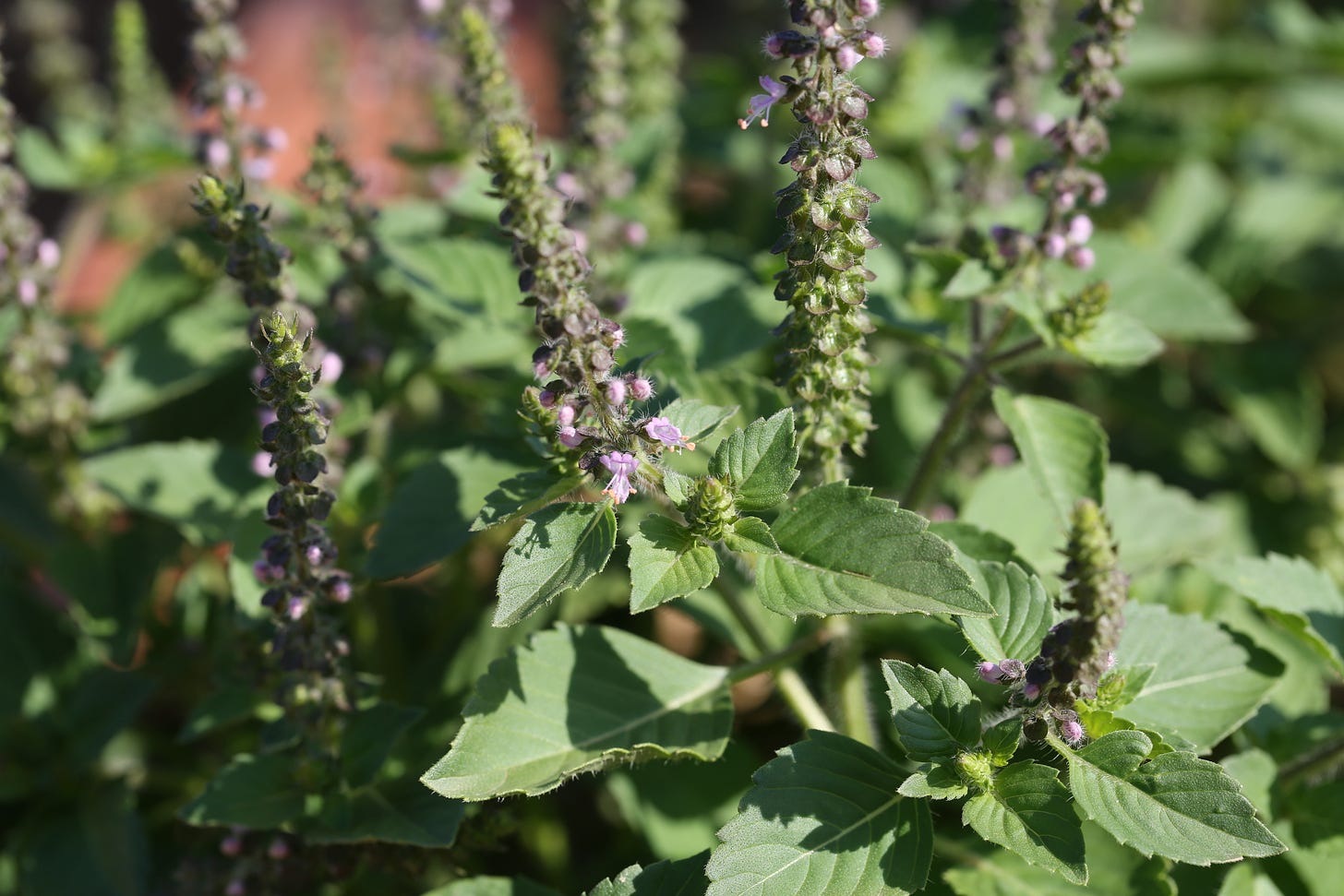
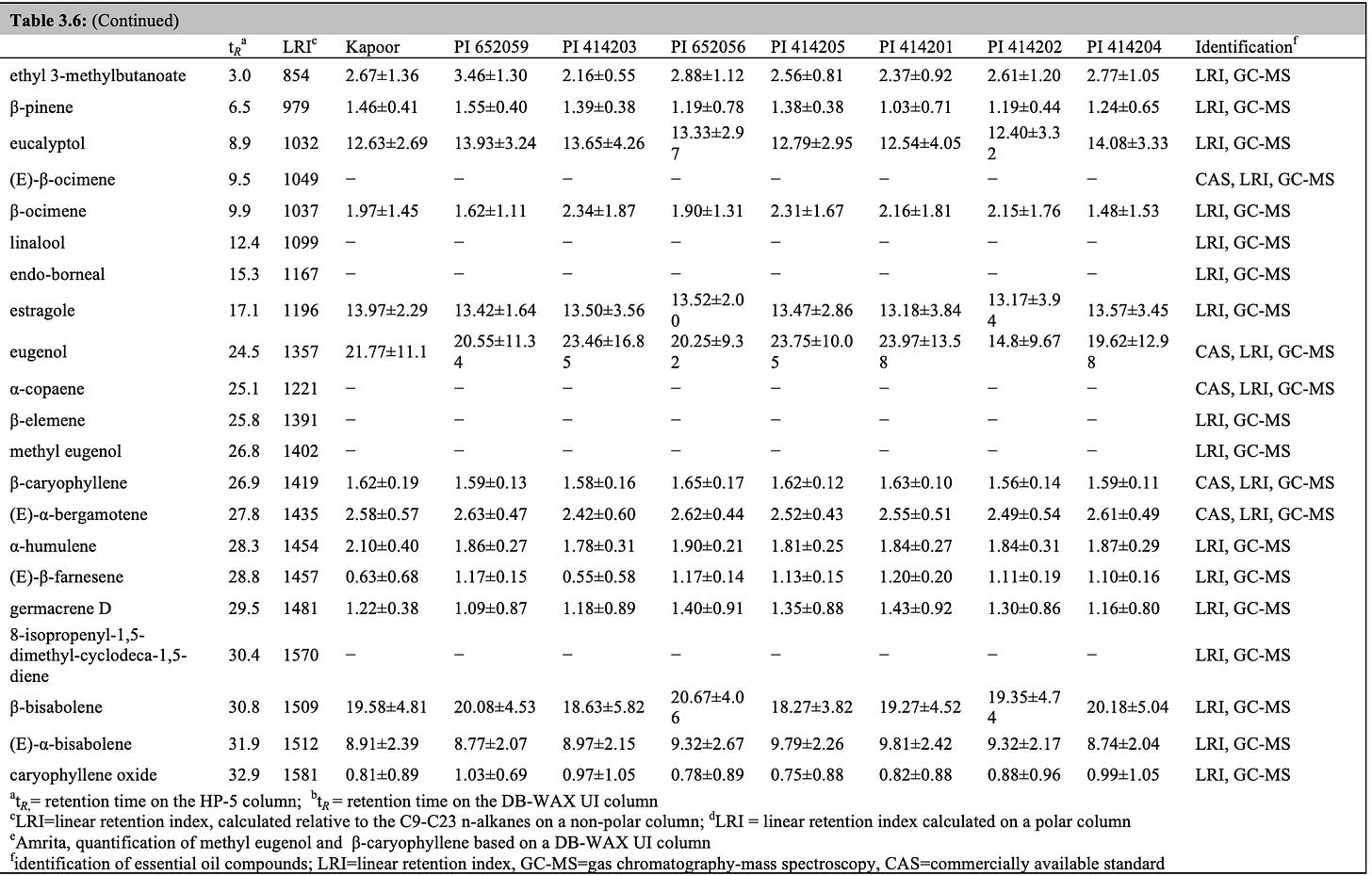
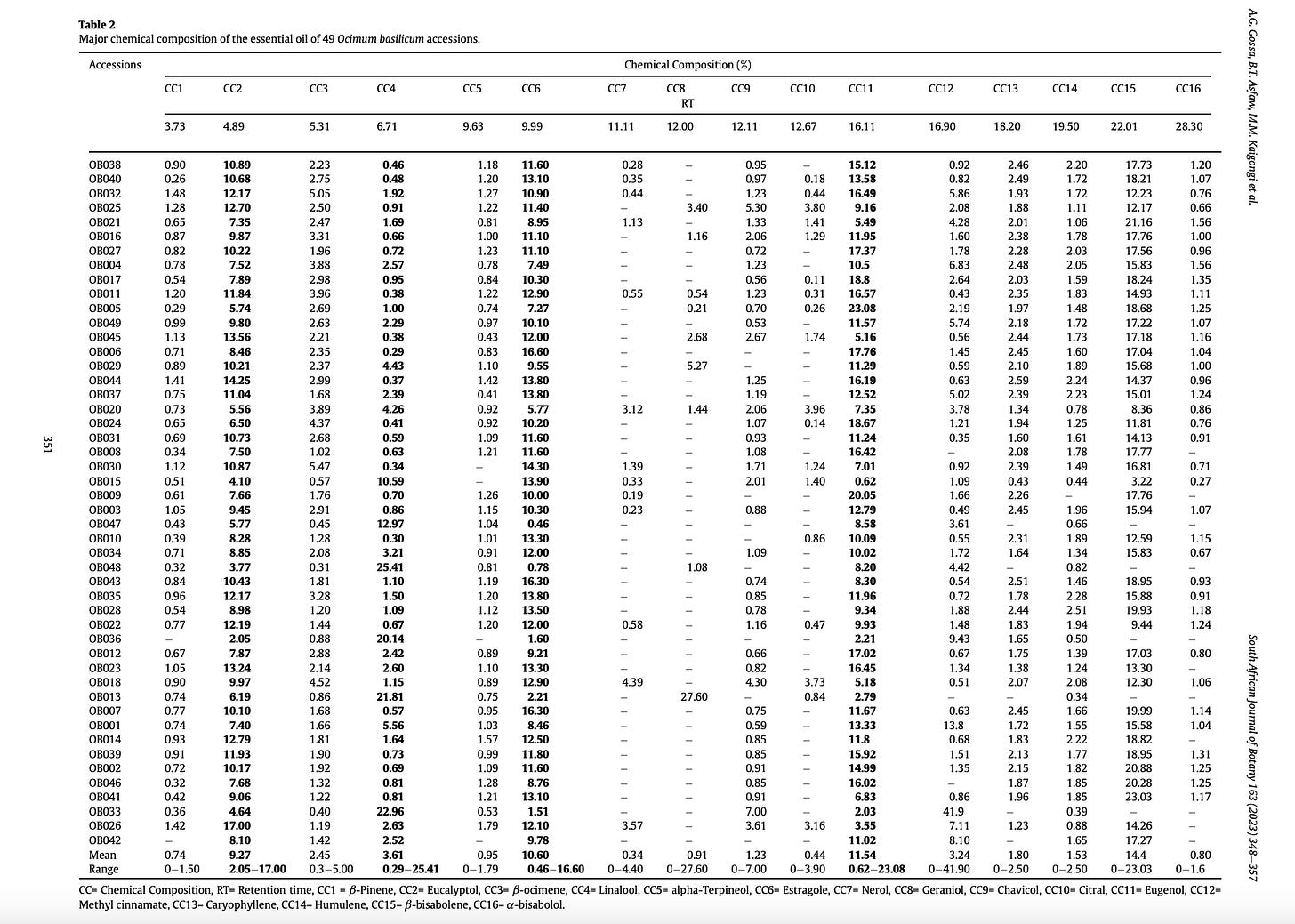

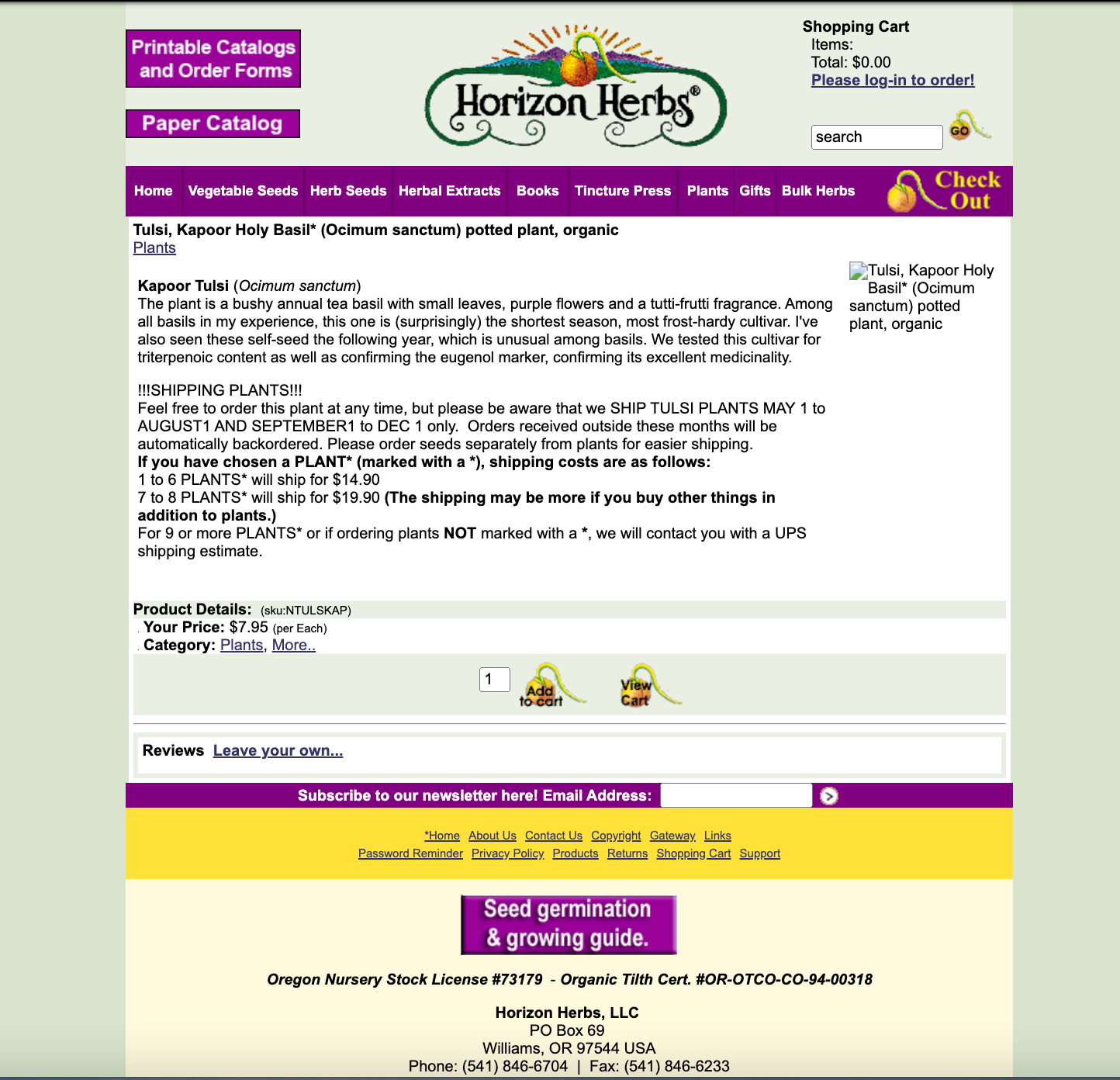
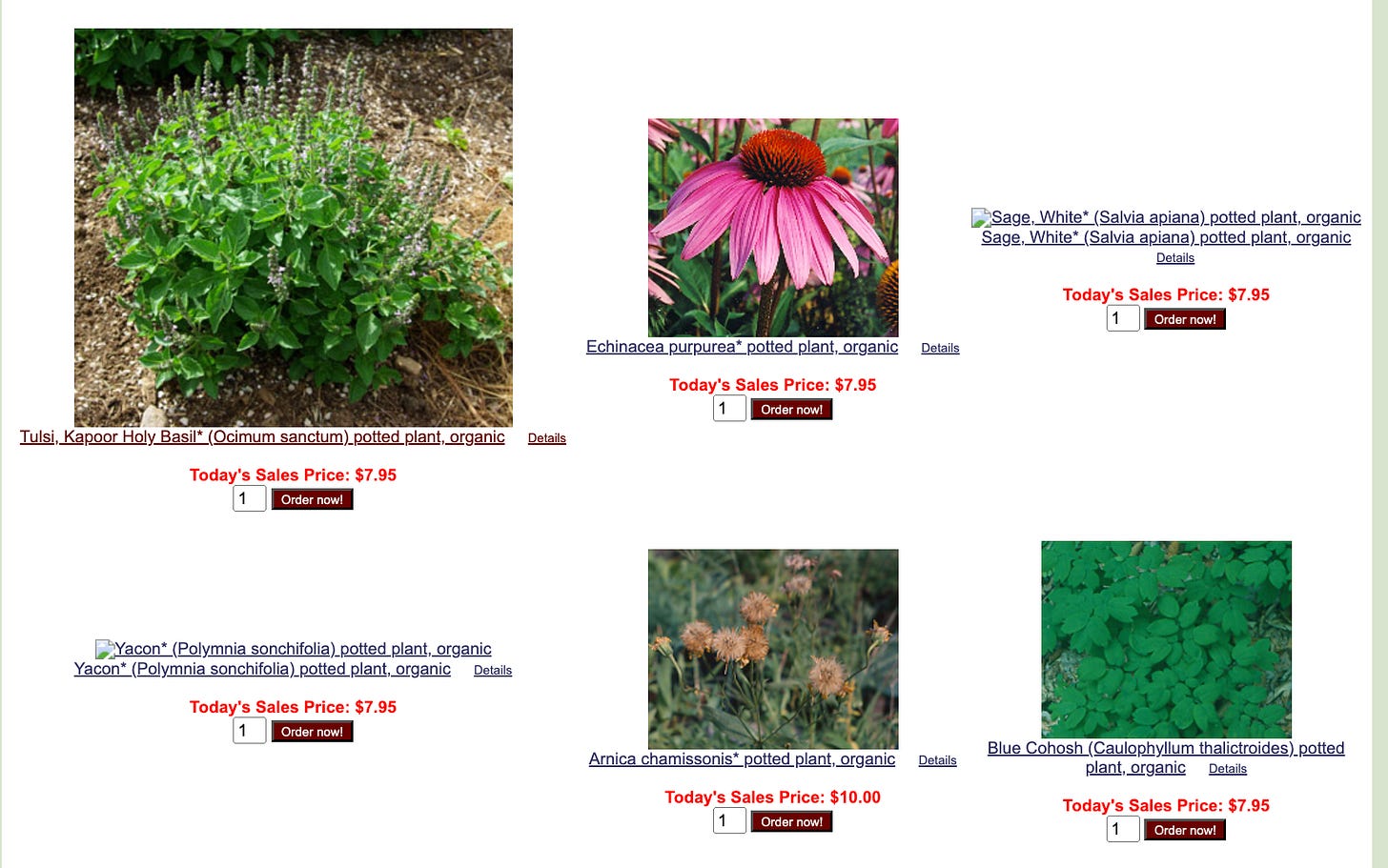
Why do you think you are not getting the responses you seek?